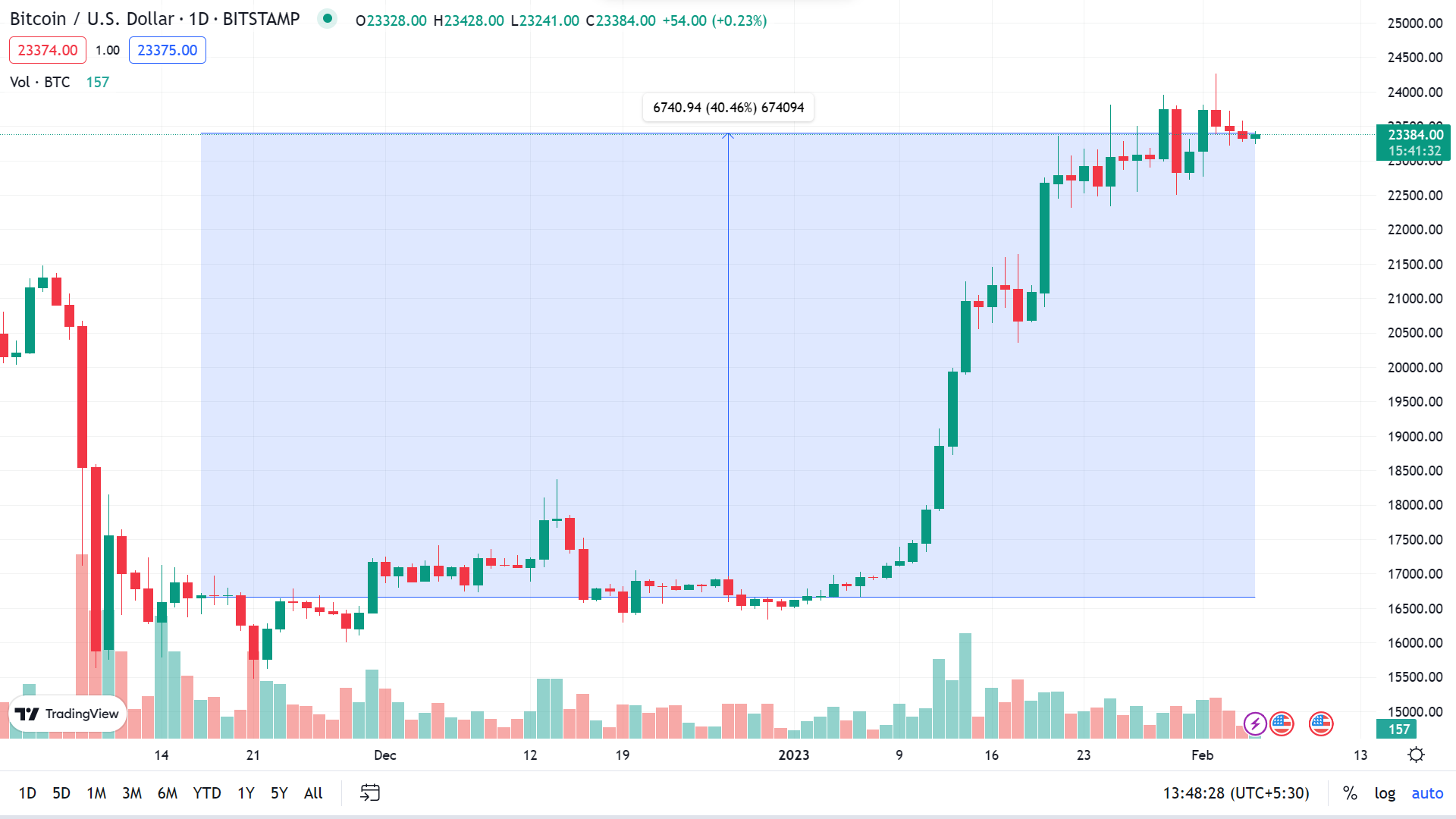Over the past 14 years, investors have been drawn to Bitcoin (BTC) for many reasons, from fixing a flawed fiat economy and reaching out to the unbanked to diversifying portfolios. However, a large part of the general public sees Bitcoin as a gateway to financial freedom amid rising fiat inflation and geopolitical uncertainties.
Traditional banking systems have served, time and again, as a tool for centralized governments to dictate financial access, especially during extreme situations. More recently, the Ukraine-Russia war served as a case study in how cryptocurrencies helped the displaced and the unbanked access funds for basic needs.
According to the intention of the creator Satoshi Nakamoto, Bitcoin aims to return power to the people. This means that no amount of regulations, penalties, or bans can stop one from using Bitcoin as money. Beyond that, a calculated investment in Bitcoin has the potential to bring us closer to achieving our dream of financial freedom. But how is that done?
hodl
The massive volatility of cryptocurrencies coupled with an investor’s unease is a recipe for instant loss. What many do not understand is that Bitcoin, unlike cryptocurrencies, is a long-term investment. Therefore, Bitcoin veterans recommend holding the asset during bull markets and buying dips during bear markets.
A few bad years aside, Bitcoin holders witnessed an average annual return of 93.8%, which in its best year shot up to 302.8%, reveals data by UpMyInterest.
As simple as it sounds, hodling (a crypto slang for holding assets) has proven to be a difficult feat for investors. Some of the factors that trigger Bitcoin to sell off include continued FUD (fear, uncertainty, and doubt) and price movements.
While it makes short-term sense to profit from Bitcoin’s volatility, zooming out on the price chart reveals that there is a greater long-term incentive to hold. Additionally, investors holding Bitcoin will always have the option to use this spending across geographic borders without losing value.
Dollar Cost Average (DCA)
When considering Bitcoin as a viable long-term investment option, many investors tend to implement the dollar cost averaging (DCA) strategy. This involves setting aside a predetermined dollar amount of regular income to reinvest in Bitcoin each month.
While El Salvador was initially criticized for adopting Bitcoin as legal tender amid crippling inflation, the country could repurpose the resulting unrealized profits to finance social projects like hospital and school construction, among others.
With Bitcoin’s bull run running out by 2022, El Salvador’s President Nayib Bukele followed a DCA-like strategy, in which the country would buy 1 BTC every day.
we are buying one #Bitcoin every day starting tomorrow.
— Nayib Bukele (@nayibbukele) November 17, 2022
When Bukele announced his plan for a Bitcoin recipe, Bitcoin was priced at approximately $16,600, data from Cointelegraph Markets Pro and TradingView show.

Since then, the price of Bitcoin has risen 40.46%, providing much-needed relief to Salvadorans. Investors seeking financial freedom should delve into a similar strategy while reacting to market changes and general public sentiment.
self-custody
When it comes to long-term holding of Bitcoin, the key is not to trust any other third-party entity with the private keys to the assets. Investors who store Bitcoin on crypto exchanges are unknowingly giving up full control of their assets.
Since the FTX fraud came to light, the case for self-custody has grown stronger. Investors who suffered losses due to alleged embezzlement realized the importance of self-custody. Maintaining ownership of the private key, through wallets (hardware/software/physical), becomes paramount for those seeking financial freedom in its truest sense.
We will be sending out an email every week strongly advising our people to never save savings on any exchange, including @paxful This is the way ! Safeguard your savings ALWAYS! pic.twitter.com/DI95Gaa5Y6
— Ray Youssef (@raypaxful) December 11, 2022
The fallout from FTX also forced crypto exchanges to prove the existence and safety of user funds to avoid a low liquidity situation.
Binance Launches Trial of Reserve System | Binance Support https://t.co/pdA2OdvAKG
— CZ Binance (@cz_binance) November 25, 2022
Although hardware alternatives for cryptographic self-secure require an initial investment, it is up to users to choose an ideal method of storing private keys, even if it means writing the private keys on a piece of paper.
The three practices mentioned above (hodl, DCA and self-custody) form the main pillars of financial freedom. However, users are not limited to trying other strategies that may suit their unique needs.
Finally, to answer the question, yes, it is possible to achieve financial freedom with Bitcoin. Given the birth of the crypto ecosystem, investors are advised to focus on the long-term benefits of Bitcoin while making short-term gains in the process.
![]()
![]()
![]()
![]()
![]()
![]()
![]()
![]()
![]()
![]()
![]()
![]()
![]()
![]()
![]()
![]()
![]()
![]()
![]()
 NEWSLETTER
NEWSLETTER



